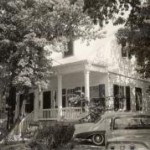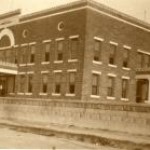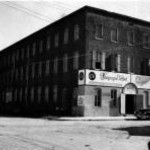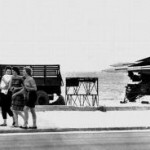FL Div Hist Res
Benjamin Curry House
Built by Benjamin Curry Jr., the brother of Florida’s first millionaire. The property has remained in the family for well over a century. His grandson, Benjamin Curry Moreno was a city engineer responsible for developing Key West’s modern roads and sidewalks. His daughter Betty married Toby Bruce, a man brought to Key West by Ernest Hemingway. Toby was often referred to as Hemingway’s “man Friday†and remained friends with the Hemingways for decades. Toby was a pall bearer at Ernest’s funeral.
Bruce Hall
Built as part of a Methodist educational complex at Hargrove Seminary, Bruce Hall featured a 600 seat auditorium with a roof garden. It served as part of the United States Navy Hospital during World War I through World War II. After 40 years of providing educational and health services Hargrove Seminary was demolished with the exception of Bruce Hall. The hall began its next life as the Navy commissary and is currently part of the Monroe County school system.
Ferdinand Hirsch Cigar Factory
This is the third and largest cigar factory owned and operated by cigar manufacturer Ferdinand Hirsch. Hirsch originally came to Key West from New York and started producing cigars in 1892 during Key West’s cigar boom. Hirsch owned this factory for a mere four years before he died. After Hirsch passed away six other cigar manufacturers, including E.H. Gato, occupied his former factory, producing cigars that were considered to be the best in the world.
Yellow Fever
This green, picket-lined field is a military cemetery. Many of the grave sites hold the remains of Civil War soldiers who died from yellow fever. More soldiers were struck down in the South by disease than by armed skirmishes. Yellow fever was greatly feared and misunderstood throughout the 1800s. Ships, cities and homes were quarantined to stop the disease. A Key West doctor, Joseph Yates Porter’s use of quarantines was an important step to finding a cure for the disease in the early 1900s.
Cuban Missile Crisis
During the fall of 1962, United States intelligence sources confirmed Soviet construction of nuclear missile sites in Cuba. This provocation, coupled with the strains of the Cold War was a direct nuclear threat to the United States. Fearing invasion of the mainland, Key West was transformed into an armed camp. President Kennedy ordered a naval quarantine of Cuba blockading all Soviet ships. After two weeks of tense negotiations the Soviet Union pulled all nuclear weapons from Cuba, and nuclear war was avoided.




